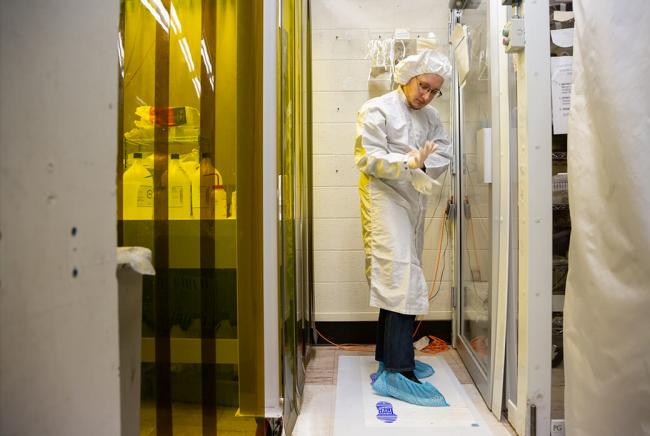Laboratory Astrophysics
Astrophysical phenomena occur in environments of the cosmos radically different from those on Earth. However, laboratory work can provide important data on the behavior of matter under the temperatures, densities, radiation intensities, and other properties occurring elsewhere in the cosmos. Astrophysicists, astrochemists, and engineers at the Center for Astrophysics | Harvard & Smithsonian research how atoms, molecules, and other materials behave under exotic conditions, enabling observational astronomers to understand the properties of astronomical systems. At the same time, telescope data provide crucial information that can be applied in the lab. The resulting interactions have led to deep insights into the behavior of interstellar clouds, the atmospheres of stars and planets, and many other systems. This work has also assisted with the development of databases of atomic and molecular spectra.
Our Work
Center for Astrophysics | Harvard & Smithsonian astrophysicists and astrochemists study a wide range of phenomena:
-
Using laboratory work to identify new substances in space. Observational astronomers discovered concrete evidence for the complex organic molecules known as polycyclic aromatic hydrocarbons (PAHs) in interstellar space. Using the National Radio Astronomy Observatory’s Green Bank Telescope (GBT), researchers identified the molecule benzonitrile (C₆H₅CN) in a molecular cloud by its radio emissions, first characterized in the lab.
GBT Detection Unlocks Exploration of 'Aromatic' Interstellar Chemistry
From the Cosmos to Earth
Stars form inside cold, dark clouds of gas and dust. Newborn stars blast their surroundings with intense radiation. Electrically charged particles stream from the Sun and bombard the worlds of the Solar System. Matter swirls around black holes and neutron stars, heating to extreme temperatures and emitting copious amounts of radio and X-ray light. All these systems — and many more — involve conditions very different from what we experience on Earth.
Laboratory astrophysics uses experimental and theoretical methods to study certain crucial aspects of astronomical environments to understand how matter behaves under extremes of temperature, radiation, magnetic fields, and other properties.
The Center for Astrophysics is home to a number of astrophysics and astrochemistry projects:
-
The McCarthy Group recreates aspects of interstellar molecular clouds to study the way molecules absorb and emit radio light, including some molecule types that have only been seen in space. The group’s work has led to the identification of previously-unknown molecules in interstellar clouds.
-
The Öberg Astrochemistry Group uses laboratory experiments and theoretical calculations to learn how complex molecules form in interstellar nebulas, and the effects of star and planet formation on the surrounding environment. This research is crucial for understanding the chemical makeup of newborn planets, including questions of whether they might be habitable.
-
CfA staff maintain databases of atomic and molecular spectra for absorption and emission of light under many different conditions. These spectra are obtained from lab experiments and computer calculations, and they are applied to understand extreme astrophysical environments such as those around stars, black holes, and planetary atmospheres. These databases include HITRAN, HITEMP, and AtomDB.

Drew Ames dresses in the super-clean laboratory clothing necessary to perform experiments in Suzanne Romaine's lab at the Center for Astrophysics | Harvard & Smithsonian.
- Learning about distant star systems from very cold experiments. Astronomers identified traces of methanol in a newborn planetary system, which lab experiments revealed is a precursor to icy comets familiar in the Solar System.
Detection of Methanol Shows Comets are Forming in Distant Solar System
- What conditions are necessary for life?
- How can astronomy improve life on earth?
- What happened in the early universe?
- What is the universe made of?
- Astro Combs
- Planetary Geology
- Solar and Stellar Atmospheres
- Masers
- Spectroscopy
- Star Formation
- Medical Applications
- Atomic & Molecular Data
- Detector Technology
- Early Universe
- Elemental Abundances
- Exoplanets
- Interstellar Medium and Molecular Clouds